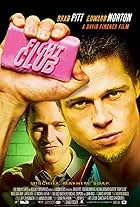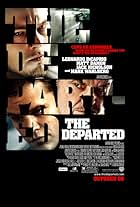12-year-old Mathilda is reluctantly taken in by Léon, a professional assassin, after her family is murdered. An unusual relationship forms as she becomes his protégée and learns the assassin... Read all12-year-old Mathilda is reluctantly taken in by Léon, a professional assassin, after her family is murdered. An unusual relationship forms as she becomes his protégée and learns the assassin's trade.12-year-old Mathilda is reluctantly taken in by Léon, a professional assassin, after her family is murdered. An unusual relationship forms as she becomes his protégée and learns the assassin's trade.
- Awards
- 5 wins & 16 nominations
Willi One Blood
- 1st Stansfield Man
- (as Willie One Blood)
Lucius Wyatt Cherokee
- Tonto
- (as Lucius Wyatt 'Cherokee')
Maïwenn
- Blond Babe
- (as Ouin-Ouin)
- Director
- Writer
- All cast & crew
- Production, box office & more at IMDbPro
Storyline
Did you know
- TriviaIt was Jean Reno's decision to play Léon as if he were "a little mentally slow" and emotionally repressed. He felt that this would make audiences accept that Léon wasn't someone who would take advantage of a vulnerable young girl. Reno claims that for Léon, the possibility of a physical relationship with Mathilda is inconceivable, so when such a relationship is discussed in the movie, Reno very much allowed Portman to be emotionally in control of the scenes. Reno stated that his rationale for agreeing to play the part was that his character was a 10 year old boy in love with a 12 year old girl, so the relationship could only ever be platonic.
- GoofsMany viewers believe that Stansfield never saw Leon, and therefore could not recognize him at the end, but may not remember that Stansfield visited Tony at the restaurant after Leon had killed part of Stansfield's crew. Thus, being intimidated and threatened by Stansfield, it could be assumed that Tony gave him a complete description of Leon, and possibly a photograph.
- Crazy creditsUnder the "SPECIAL THANKS" heading you will find: Chevalier KAMEN (Prince of the Mash Potatoes) Byblos Bill (King of Saint Tropez) Princess Trudy (Queen of Hearts)
- Alternate versionsIn the original version there is a shot of Tony's place at night just before Stansfield and his men come in on the birthday party. This isn't in the 'Version integrale' (International Cut).
- SoundtracksShape Of My Heart
Written by Sting and Dominic Miller
Introduction by Dominic Miller
Performed by Sting
Courtesy of Magnetic Ltd. / A&M Records
by arrangement with PolyGram Special Projects
Featured review
I first saw this in the late 90s. Then again in the mid 2k on a dvd i own.
Revisited the remastered extended version last night with my family.
This movie is more than just a hitman or an assassin movie.
The music is top notch, the characters are very well developed, the action scenes n direction are stylish.
But the best part are the scenes between Reno n Portman. Leon is amazingly n very differently portrayed by Reno.
There is a Bollywood copy known as Bichoo (Scorpio).
The only thing good in the Bollywood movie is that the guy who played Tony gives away all of the hitman's money to the girl whereas in the original, the character of Tony gives only a single currency note to Mathilda n keeps blabbing the same "safer than the usual bank story".
Revisited the remastered extended version last night with my family.
This movie is more than just a hitman or an assassin movie.
The music is top notch, the characters are very well developed, the action scenes n direction are stylish.
But the best part are the scenes between Reno n Portman. Leon is amazingly n very differently portrayed by Reno.
There is a Bollywood copy known as Bichoo (Scorpio).
The only thing good in the Bollywood movie is that the guy who played Tony gives away all of the hitman's money to the girl whereas in the original, the character of Tony gives only a single currency note to Mathilda n keeps blabbing the same "safer than the usual bank story".
- Fella_shibby
- Sep 23, 2021
- Permalink
Details
- Release date
- Countries of origin
- Official site
- Languages
- Also known as
- El perfecto asesino
- Filming locations
- Paris, France(Leon's apartment interiors)
- Production companies
- See more company credits at IMDbPro
Box office
- Budget
- $16,000,000 (estimated)
- Gross US & Canada
- $19,501,238
- Opening weekend US & Canada
- $5,306,558
- Nov 20, 1994
- Gross worldwide
- $20,278,356
- Runtime1 hour 50 minutes
- Color
- Sound mix
- Aspect ratio
- 2.39 : 1
Contribute to this page
Suggest an edit or add missing content


































